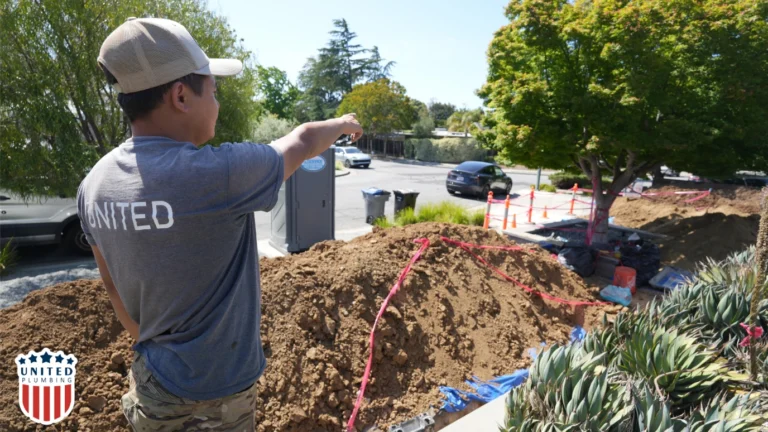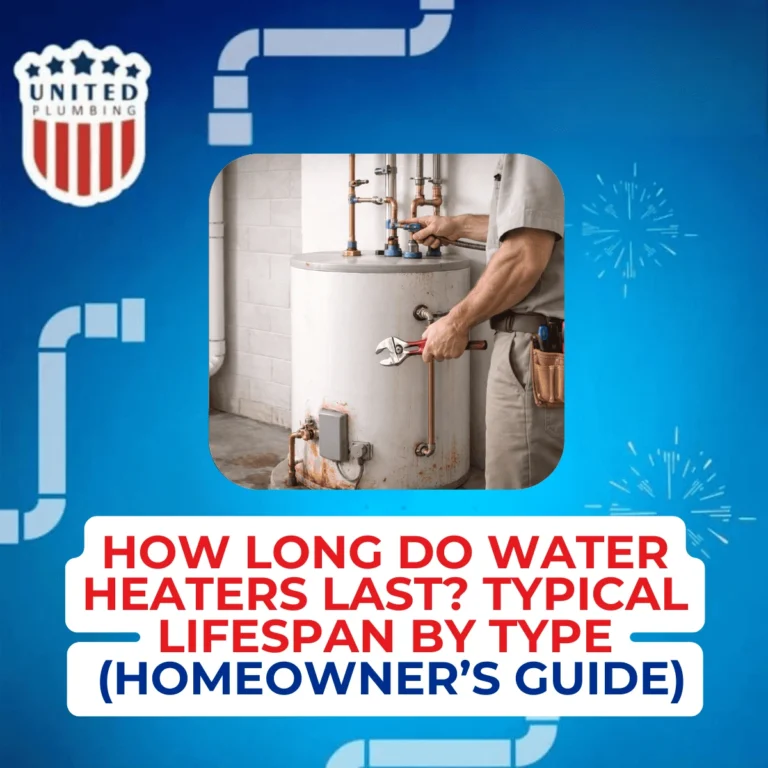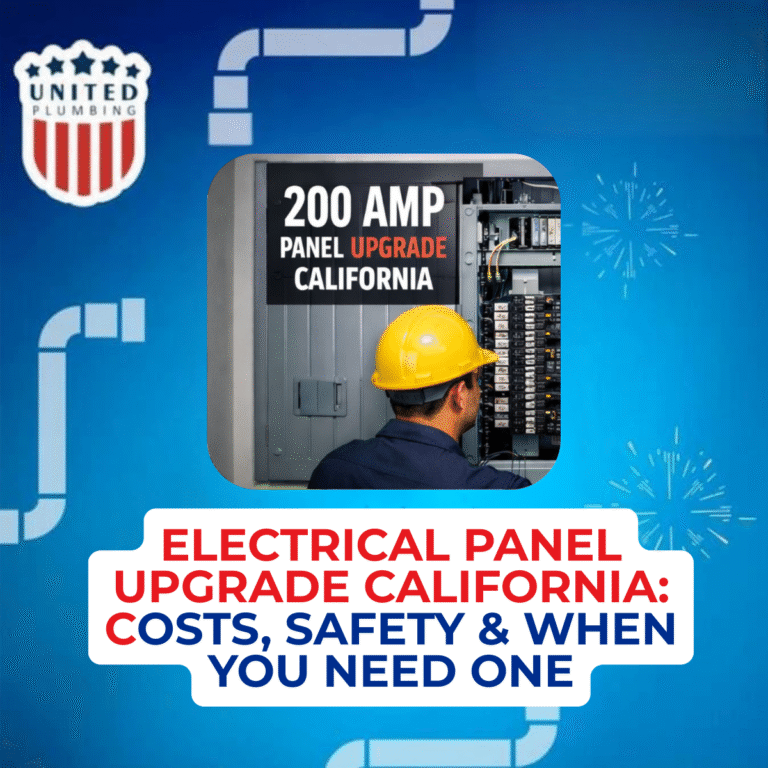FIVE-STAR TEAM WARRANTY &
SAME-DAY SERVICE
Electric Tankless Water Heater: No Hot Water
Electric tankless water heaters offer convenience, space-saving design, and energy efficiency, but when there’s no hot water, it quickly becomes a serious issue for homeowners. Whether you’re experiencing inconsistent temperatures or a complete lack of heated water, this guide covers the most common problems, their causes, and practical steps to get your system back on track.
Power Supply or Circuit Breaker Issues
One of the most common issues with electric units is a loss of power. If your hot water heater is not working, the circuit breaker may have tripped due to an overload or wiring fault.
What to do:
- Check your home’s breaker box
- Reset the switch for your tankless unit
- If the issue persists, contact an electrician to inspect the internal components
Low Water Pressure or Flow Rate
Electric tankless hot water heaters rely on a minimum water flow to activate. If you’re noticing low water pressure, the system may not even turn on.
Potential causes include:
- Clogged filter or shower head
- Blocked water valve or water line
- Sediment or mineral buildup from hard water
Heating Element Failure

If your unit has power but still fails to heat water, a burned-out heating element could be the culprit. This is especially common in areas with poor water quality.
Tip: Regular flushing with a descaling solution helps remove mineral deposits, reducing wear on the heating element.
Hard Water and Mineral Buildup
Over time, hard water can cause severe sediment buildup inside the heat exchanger, leading to reduced efficiency or shutdowns.
Preventive measures:
- Install a water softener
- Use an inline water filter
- Perform regular maintenance to preserve performance and energy efficiency
Temperature Sensor or Settings Malfunction
Incorrect temperature settings or a faulty temperature sensor can result in warm water instead of hot.
Signs include:
- Inconsistent temperature
- Flashing error codes on the digital display
- Lukewarm output from the hot water tap
Always refer to your manufacturer’s instructions when troubleshooting.
Clogged Filter or Internal System Error
Many modern tankless water heaters shut down when the internal water filter is blocked or when system diagnostics detect irregularities.
Look for:
- Flashing error codes
- Flow rate reduction
- Unit turning off mid-use
Learn how to maintain a tankless water heater in our complete guide.
Gas vs. Electric: Know the Difference
While this guide focuses on electric models, it’s worth noting that if you’re using a gas water heater, similar symptoms could result from:
- Blocked gas valve
- Faulty ignition system
- Insufficient gas pressure or gas supply issues
If you’re considering switching systems, factor in the gas line, gas bill, and your home’s compatibility.
Here is more resources if you are stuck deciding? Compare the pros and cons in our blog: Gas vs. Electric Water Heater – Which One Is Better?
Overloaded System or Poor Sizing
Not having enough hot water? Your tankless model may be undersized for your usage needs — especially with multiple appliances (like a washing machine) running at once.
Solutions:
- Add a buffer tank
- Upgrade to a higher-capacity tankless unit
- Install a second unit for high-demand zones
Read here on How to choose the right size tankless unit — or better yet, call a licensed plumbing professional to recommend the ideal model and size for your home.
Lack of Maintenance
Skipping regular maintenance is a top reason for unexpected failures. Annual flushing prevents mineral buildup, protects your heat exchanger, and ensures a steady supply of consistent hot water.
Add-on tip: A recirculation pump may improve hot water delivery speed in larger homes.
Expert Troubleshooting Tips
If you’ve exhausted DIY efforts and still have no hot water, it’s time for professional help. An expert plumber can assess:
- Electrical wiring
- Faulty heating elements
- Sensor calibration
- Clogged venting systems or airflow issues
Before making your decision, you can also check out Consumer Reports’ unbiased Tankless Water Heaters Buying Guide for expert, ad-free advice.
Schedule a Professional Inspection Today
At United HVAC Electrical & Plumbing, we specialize in diagnosing and repairing tankless hot water heaters and providing expert water heater installation. From power outage recovery to gas supply problems, our team handles it all.
Contact us now to book reliable plumbing services and get your hot water running again.
Post views: 783
Frequently Asked Questions
Do electric tankless water heaters really save money?
Yes — they only use energy when hot water is needed, reducing utility bills.
Can they supply enough hot water for a whole house?
Yes, but only if properly sized. Large households may need multiple units.
What size unit do I need?
Depends on your flow rate (GPM) and the number of fixtures used simultaneously.
How long do electric tankless units last?
Typically 20+ years with regular maintenance.
Do I need special electrical wiring?
Usually, yes. Many require a 240V connection and higher amperage.
Is maintenance required?
Yes. Annual descaling (especially in hard water areas) and filter cleaning are recommended.
Latest posts

How Long Do Water Heaters Last? Typical Lifespan by Type (Homeowner’s Guide)
Your water heater works quietly behind the scenes every single day until one day it doesn’t. One of the most common...

Electrical Panel Upgrade California: Costs, Safety & When You Need One
An electrical panel upgrade in California is one of the most important safety and performance improvements a...


If you still have questions or need advice, please leave a request and we will contact you as soon as possible
Need a plumber and got no clue where to start?
(408) 539-6936Facing a plumbing issue? Get a FREE in-person estimate and quick solutions from our skilled technicians, ensuring your home runs smoothly again!
